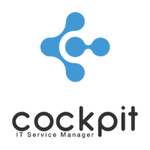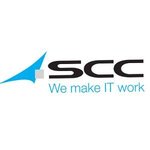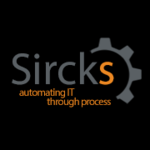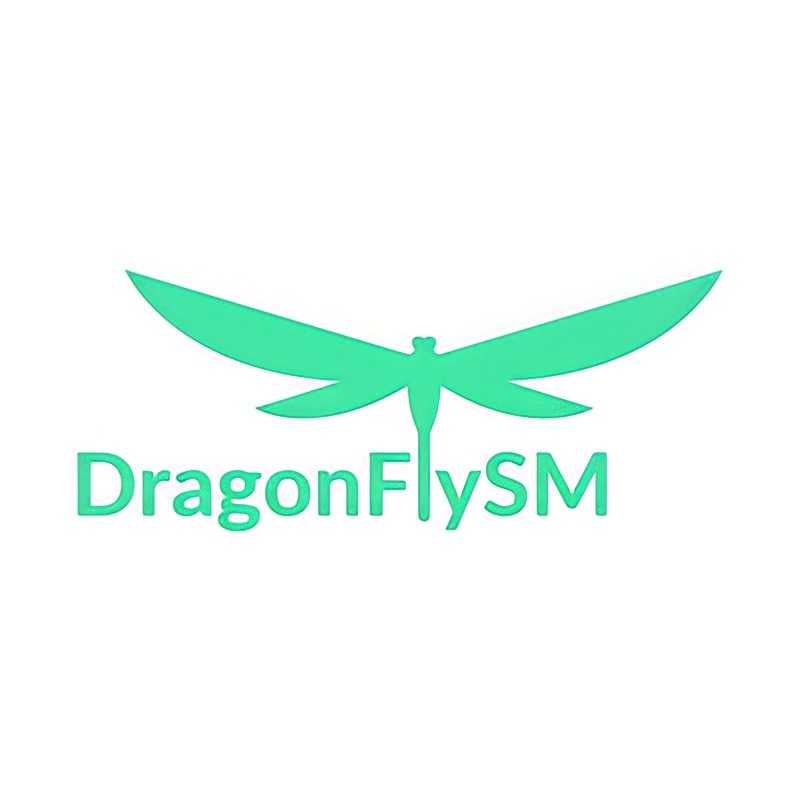Description

Cockpit IT Service Manager

SCC
Comprehensive Overview: Cockpit IT Service Manager vs SCC
Cockpit IT Service Manager is a software solution developed by SCC (Specialist Computer Centres) for IT service management. It's important to clarify that "Cockpit IT Service Manager" is the primary product, and SCC is the company behind its development. Let's explore the aspects requested:
a) Primary Functions and Target Markets
Primary Functions:
- Incident Management: Helps organizations manage IT service disruptions efficiently, reducing downtime and improving support response times.
- Problem Management: Identifies recurring issues, analyzing their root causes to prevent future incidents.
- Change Management: Facilitates streamlined management of IT infrastructure changes, minimizing risks associated with updates or new deployments.
- Service Request Management: Manages user requests for various IT services, ensuring timely fulfillment.
- Configuration Management Database (CMDB): Maintains an updated repository of IT assets and configurations to support further service management processes.
- IT Asset Management: Tracks and manages IT equipment and resources throughout their lifecycle.
- Service Level Management: Monitors and manages service delivery according to predefined service level agreements (SLAs).
Target Markets:
- Mid-sized to Large Enterprises: Cockpit IT Service Manager caters predominantly to medium and large organizations requiring comprehensive IT service management solutions.
- Various Industries: It is versatile enough to be used across multiple industries, including financial services, healthcare, education, and government, where IT service reliability is critical.
b) Market Share and User Base
There is limited specific data about the exact market share or user base numbers for Cockpit IT Service Manager, as such detailed metrics are often proprietary or not publicly disclosed. However, like other IT service management tools, it competes with several well-known platforms in the industry, including ServiceNow, BMC Remedy, and CA Service Desk Manager.
While Cockpit IT Service Manager may not have the same level of name recognition or penetration as some of the larger competitors in IT service management, it often appeals to clients looking for a tailored or regionally localized solution, particularly in markets where SCC has a strong presence.
c) Key Differentiating Factors
-
Tailored Solutions: Cockpit IT Service Manager can be customized to align with the specific needs of an organization, which can differentiate it from larger, more generalized ITSM tools.
-
Integration with Existing SCC Services: Organizations already utilizing SCC's array of IT solutions and services may benefit from the seamless integration possibilities with Cockpit, making it an attractive option for current SCC customers.
-
Regional Expertise and Support: Due to SCC's strong presence in certain markets, customers in these regions might benefit from more localized support and knowledgeable service teams that understand regional business needs and challenges.
-
Cost Efficiency: While not always the case, more niche or tailored solutions like Cockpit IT Service Manager might offer competitive pricing compared to industry giants, especially for companies that do not require all the extensive functionalities offered by larger competitors.
Overall, while Cockpit IT Service Manager might not dominate the ITSM landscape globally, its appeal lies in its ability to deliver customized, integrated service management solutions backed by SCC's broader IT service portfolio and regional strengths.
Contact Info

Year founded :
Not Available
Not Available
Not Available
Not Available
Not Available

Year founded :
1975
Not Available
Not Available
United Kingdom
Not Available
Feature Similarity Breakdown: Cockpit IT Service Manager, SCC
When comparing Cockpit IT Service Manager and SCC, both are comprehensive IT service management (ITSM) solutions designed to streamline and enhance IT processes. Here’s a breakdown of their features in terms of similarities, user interface comparisons, and unique features:
a) Core Features in Common
-
Incident Management: Both platforms offer robust incident management systems, allowing IT teams to track, manage, and resolve incidents efficiently.
-
Change Management: They support change management processes, helping organizations manage IT changes with minimal risk and disruption.
-
Problem Management: Both solutions include problem management capabilities to identify and resolve root causes of incidents.
-
Service Request Management: Users can submit and manage service requests through both platforms, streamlining service delivery.
-
Asset Management: Each product provides asset management features to track and control IT assets throughout their lifecycle.
-
Knowledge Management: Both solutions offer knowledge bases to capture and share knowledge, enabling faster issue resolution.
-
Self-Service Portal: They include self-service portals, empowering users to find solutions independently and reduce support workload.
-
SLAs and Reporting: Both systems facilitate tracking and management of service level agreements (SLAs) and provide reporting tools for performance monitoring.
b) User Interface Comparisons
-
Cockpit IT Service Manager: Known for its intuitive and user-friendly interface, Cockpit ITSM is designed with simplicity in mind, often preferred by organizations looking for straightforward navigation and easy accessibility of features.
-
SCC: SCC's interface is typically customizable and modular, often catering to larger enterprises that require tailored solutions. While it might have a steeper learning curve than Cockpit, it offers a depth of customization that can appeal to more complex IT environments.
c) Unique Features
-
Cockpit IT Service Manager:
- Integrated IT Governance: It stands out for its integrated IT governance capabilities, supporting better alignment with business objectives and compliance.
- Advanced Automation: Cockpit often emphasizes automation features, helping organizations automate repetitive tasks to enhance efficiencies.
-
SCC:
- IT Operations Management (ITOM): SCC provides advanced IT Operations Management capabilities that are often more comprehensive than those offered by Cockpit, particularly for larger enterprises with complex IT infrastructure.
- Broad Platform Integrations: Known for its extensive integrations with other enterprise systems, SCC can seamlessly connect with a variety of third-party tools and platforms.
In conclusion, while both Cockpit IT Service Manager and SCC offer a strong suite of core ITSM features geared toward improving IT service delivery, they each offer distinctive strengths that can sway user preference depending on organizational needs and scale.
Features

Not Available

Not Available
Best Fit Use Cases: Cockpit IT Service Manager, SCC
Cockpit IT Service Manager and SCC (usually referring to Microsoft's System Center Configuration Manager) serve different purposes and cater to different business needs. Here’s a detailed look at their best fit use cases and how they cater to various industries and company sizes:
Cockpit IT Service Manager
a) Best Fit Use Cases:
-
Small to Medium Enterprises (SMEs): Cockpit IT Service Manager is typically well-suited for small to medium-sized businesses that require a comprehensive IT service management (ITSM) solution. Its scalability allows smaller businesses to implement an ITIL-compliant service management suite without significant upfront investments or complexity.
-
Organizations Focusing on ITIL Processes: Businesses that aim to adopt ITIL best practices for IT service management will find Cockpit IT Service Manager an excellent choice. It provides modules and functionalities that support incident management, problem management, change management, and more, aligning with ITIL standards.
-
Companies Requiring Customizable Solutions: Companies that need a customizable ITSM solution tailored to their specific workflows and processes can benefit from Cockpit. It offers flexibility in configuring and adapting the software to fit unique business needs.
d) Industry Verticals and Company Sizes:
- IT Service Providers: As an ITSM tool, Cockpit is traditionally leveraged by IT service providers to enhance service delivery and manage client-related incidents and requests efficiently.
- Healthcare and Education: These sectors often require robust service management to handle internal IT operations, where Cockpit can assist in managing service desks and ensuring compliance with specific industry regulations.
SCC (System Center Configuration Manager)
b) Preferred Scenarios:
-
Large Enterprises with Complex IT Infrastructures: SCC is ideal for large organizations with extensive IT infrastructure that require centralized management of endpoints. It facilitates large-scale deployment and management of software applications, compliance settings, and security policies across a vast network of computers.
-
Businesses Needing Comprehensive Device Management: For businesses operating with a diverse range of devices and operating systems (Windows, Linux, macOS), SCC provides robust tools for asset inventory, software distribution, and patch management.
-
Organizations Already Using Microsoft Ecosystem: Businesses deeply integrated into the Microsoft environment (e.g., running Windows Server, Active Directory, Azure) would find SCC complementary to their existing systems, providing seamless integration and management capabilities.
d) Industry Verticals and Company Sizes:
- Finance and Banking: These institutions often have strict regulatory requirements and complex IT environments, making SCC suitable for ensuring compliance and security across all corporate devices.
- Government and Large Educational Institutions: Similar to large corporations, these entities need scalable solutions for managing thousands of devices with centralized control and alignment with compliance standards.
In summary, Cockpit IT Service Manager is best suited for smaller to medium-sized businesses needing ITSM capabilities, ideally those focusing on ITIL processes, while SCC is optimal for large enterprises looking for robust device and endpoint management, particularly within the Microsoft ecosystem. Both solutions cater to different organizational needs and scales, from small businesses to large enterprises across various industry verticals.
Pricing

Pricing Not Available

Pricing Not Available
Metrics History
Metrics History
Comparing undefined across companies
Conclusion & Final Verdict: Cockpit IT Service Manager vs SCC
To draw a comprehensive conclusion and final verdict on Cockpit IT Service Manager versus SCC (Service Control Center), it is crucial to consider the following aspects: functionality, user-friendliness, cost, support, and specific organizational needs.
Conclusion
a) Best Overall Value:
While both Cockpit IT Service Manager and SCC offer robust features, the best overall value depends on the organization's specific requirements, budget, and IT infrastructure. If the primary need is for an integrated service management solution with seamless scalability, SCC could be a better fit due to its comprehensive service management capabilities and integration potential with other enterprise systems. However, if cost-effectiveness and ease of implementation are priorities, Cockpit IT Service Manager may provide the better overall value with its straightforward deployment and user-friendly interface.
b) Pros and Cons:
Cockpit IT Service Manager:
Pros:
- User-friendly interface, making it accessible for teams with varying levels of technical expertise.
- Cost-effective solution, suitable for small to medium-sized businesses.
- Quick deployment and straightforward configuration process.
- Strong focus on ITIL-compliant practices, enhancing service delivery and support processes.
Cons:
- May have limited advanced features compared to more enterprise-focused solutions.
- Potential scalability issues for very large enterprises or highly complex environments.
- Integration capabilities might not be as robust as some competitors.
SCC (Service Control Center):
Pros:
- Comprehensive suite of tools and features, suitable for large enterprises.
- Excellent scalability, handling complex environments efficiently.
- Strong integration capabilities with other enterprise systems and third-party applications.
- Advanced reporting and analytics capabilities for in-depth performance insights.
Cons:
- Higher cost, which may not be feasible for smaller organizations.
- More complex implementation process, requiring dedicated IT resources.
- Users may face a steeper learning curve due to the feature richness.
c) Recommendations:
For users deciding between Cockpit IT Service Manager and SCC, the decision should be guided by current organizational size, budget constraints, and long-term IT strategy. If a company is in a growth phase, anticipates expanding its IT infrastructure, or requires extensive customization and integration, SCC is advisable for its scalability and enterprise-level capabilities. Conversely, if a company aims for a cost-effective solution and prioritizes ease of use and rapid deployment, Cockpit IT Service Manager is recommended.
In summary, both tools have their strengths and should be chosen based on specific organizational needs, resource availability, and strategic goals. Evaluating current and future IT service management requirements will aid in making the most informed choice.
Add to compare
Add similar companies




